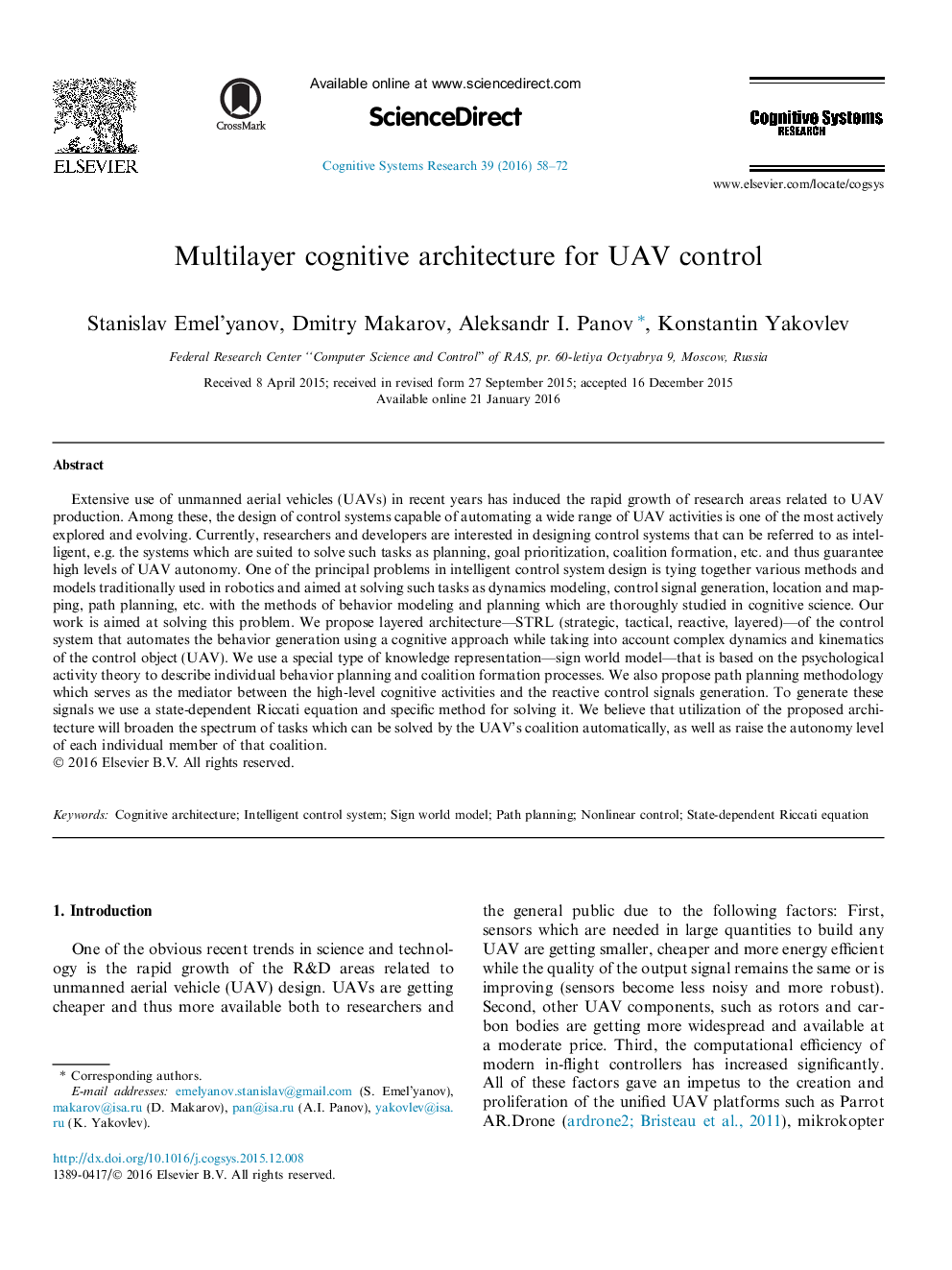| کد مقاله | کد نشریه | سال انتشار | مقاله انگلیسی | نسخه تمام متن |
|---|---|---|---|---|
| 378366 | 659142 | 2016 | 15 صفحه PDF | دانلود رایگان |
Extensive use of unmanned aerial vehicles (UAVs) in recent years has induced the rapid growth of research areas related to UAV production. Among these, the design of control systems capable of automating a wide range of UAV activities is one of the most actively explored and evolving. Currently, researchers and developers are interested in designing control systems that can be referred to as intelligent, e.g. the systems which are suited to solve such tasks as planning, goal prioritization, coalition formation, etc. and thus guarantee high levels of UAV autonomy. One of the principal problems in intelligent control system design is tying together various methods and models traditionally used in robotics and aimed at solving such tasks as dynamics modeling, control signal generation, location and mapping, path planning, etc. with the methods of behavior modeling and planning which are thoroughly studied in cognitive science. Our work is aimed at solving this problem. We propose layered architecture—STRL (strategic, tactical, reactive, layered)—of the control system that automates the behavior generation using a cognitive approach while taking into account complex dynamics and kinematics of the control object (UAV). We use a special type of knowledge representation—sign world model—that is based on the psychological activity theory to describe individual behavior planning and coalition formation processes. We also propose path planning methodology which serves as the mediator between the high-level cognitive activities and the reactive control signals generation. To generate these signals we use a state-dependent Riccati equation and specific method for solving it. We believe that utilization of the proposed architecture will broaden the spectrum of tasks which can be solved by the UAV’s coalition automatically, as well as raise the autonomy level of each individual member of that coalition.
Journal: Cognitive Systems Research - Volume 39, September 2016, Pages 58–72
